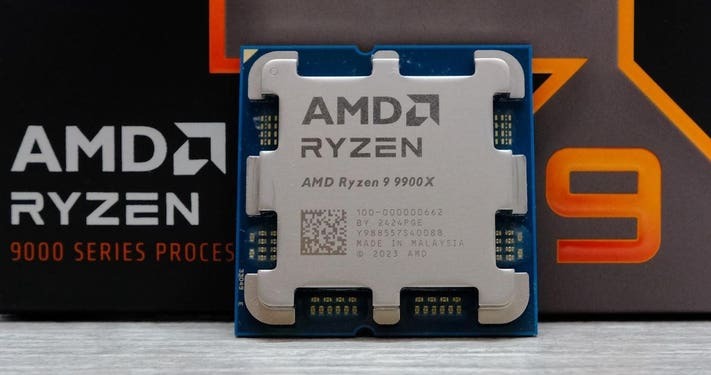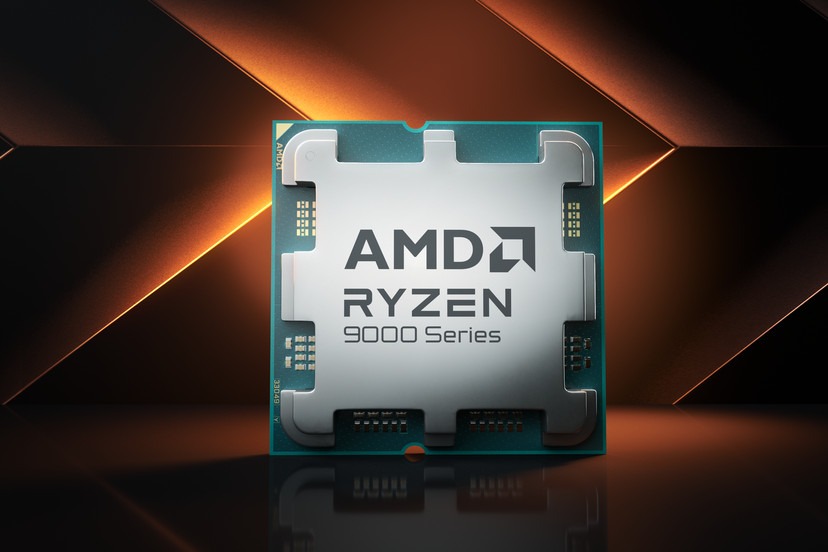In the fast-paced world of computer processors, performance improvements often come not just from new hardware releases, but also from software optimizations. AMD, one of the leading CPU manufacturers, has been at the forefront of pushing the boundaries of processor technology with its Ryzen series. The recent launch of the Ryzen 9000-series, based on the Zen 5 architecture, was met with high expectations from enthusiasts and professionals alike.

Performance Boost and Latency Reduction
AMD is releasing new BIOS updates that will significantly enhance the performance of its Ryzen 9600X and 9700X processors while also addressing some latency issues. These improvements come approximately a month after the initial release and somewhat disappointing reviews of the Zen 5 desktop CPUs.
The updates coincide with optimizations to Windows 11 that include AMD-specific branch prediction enhancements for both Zen 4 and Zen 5 chips. This collaborative effort between AMD and Microsoft showcases the importance of software optimization in maximizing hardware performance.
Addressing Core-to-Core Latency
CPU reviewers had reported higher-than-expected core-to-core latency across the Ryzen 9000-series desktop processors. AMD has now addressed this issue with a new BIOS optimization.
The latest AMD updates for AM5 motherboards include AGESA PI 1.2.0.2 firmware. According to AMD, this update will address some “corner cases” where it previously took two transactions to read and write when information was shared across different parts of a Ryzen 9 9000 processor.
“We’ve managed to cut the number of transactions in half for this use case, which helps reduce core-to-core latency in multi-CCD models,” says AMD.
This optimization is particularly important for applications that rely on fast inter-core communication, such as certain productivity apps and some games. For more information on how latency affects CPU performance, check out our guide to CPU latency.
New 105-Watt Mode for Enhanced Performance
The BIOS update also introduces a new 105-watt cTDP (configurable Thermal Design Power) option for the Ryzen 9600X and 9700X. This feature allows users to increase the thermal design power of these processors, potentially unlocking more performance.
“These processors have been validated at 105W since their release, so you won’t be pushing them beyond their design limits,” AMD assures. This boost is especially beneficial for multithreaded workloads, but you might see some gains in less-threaded apps too.
While users will need to ensure they have appropriate cooling to enable the 105-watt mode, AMD claims it should result in approximately 10 percent more performance on the Ryzen 9600X and 9700X. Importantly, AMD confirms that using this new mode will not void your warranty.
New AM5 Motherboards: X870 and X870E
Coinciding with these BIOS updates, AMD is launching its next round of AM5 motherboards this week. The X870 and X870E boards are now available at retailers, offering several advanced features:
- USB 4.0 as standard
- Simultaneous PCIe 5 Gen 5 support on both graphics and NVMe sides
- Support for higher-clocked memory, including DDR5-8000 EXPO
While these new boards aren’t necessary for AMD’s latest Ryzen 9000-series CPUs, they do offer future-proofing benefits. AMD hints at the importance of full PCIe Gen 5 support, stating it’s “more important than ever now that we are on the cusp of a new generation of graphics cards.” This statement has fueled rumors about the upcoming RTX 5090 potentially being a PCIe Gen 5 card.
The DDR5-8000 EXPO support on these new boards also brings tangible benefits, with AMD claiming around 1 to 2ns of latency improvements over DDR5-6000.
Conclusion
AMD’s swift response to initial performance concerns with the Ryzen 9000-series demonstrates the company’s commitment to delivering top-tier performance to its customers. The new BIOS updates, offering improved latency and a performance-boosting 105-watt mode, should help address some of the criticisms leveled at these processors upon release.
Furthermore, the introduction of the X870 and X870E motherboards shows AMD’s forward-thinking approach, preparing users for future hardware advancements in graphics cards and memory technology.
For Ryzen 9000-series owners, these updates are a welcome improvement that should enhance their computing experience. For those considering an upgrade or new build, the combination of these optimized processors and feature-rich motherboards presents an attractive option in the high-performance CPU market.
Related Links:










Add Comment